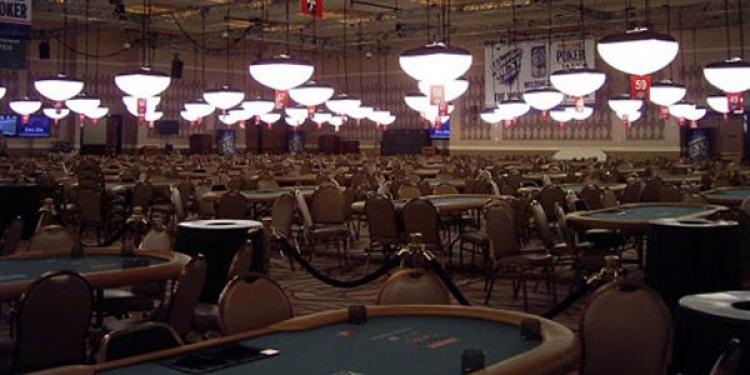Top 3 Failed Las Vegas Casino Investments
Posted: November 8, 2014
Updated: June 4, 2017

We’ve heard enough about Atlantic City’s financial problems this year, so let’s have a look at some of Las Vegas’ failures too.
Financial experts have been warning America’s casino industry for a long time. Dark days are coming, they said. It already happened to Atlantic City. Or it’s still happening, because the gambling hub’s fifth casino could close in a couple of weeks.
But Atlantic City is not the only one suffering because of the growing competition from neighboring states; business has been slow in Las Vegas too. Even in Macau, the world’s largest gambling hub, profits have been dropping on a year-to-year basis. Meanwhile, Europe is betting on the ever-growing online and mobile casino industries.
Let’s take a look at three Las Vegas casinos that failed miserably, squandering away billions of dollars.
The Fontainebleau Resort
If you’re in Las Vegas, you can’t miss the Fontainebleau. It’s the tallest building in Las Vegas, 735 feet high. The resort has a 3,800-room hotel, a casino, condominium and retail facilities. It could have been the ideal place for tourists looking to gamble, eat and do some shopping, but instead it’s nothing but an empty shell.
Its construction began before America’s last major recession and stopped in 2009, when Bank of America and other big lenders pumping money into the $2.9 billion project decided to cut off its funding, leaving it in a permanent limbo.
With no more cash to fuel its construction, the casino developer – Fontainebleau Las Vegas – went bankrupt. That was when Icahn Enterprises, the company owned by billionaire Carl Icahn, swooped in to buy the building at a fraction of its value, in a bankruptcy auction. It cost around $150 million back then.
There were hopes that the new buyer would continue and finalize the project, but this didn’t happen. The investor started to dismantle the building, which only proved that Las Vegas cannot afford to complete the Fontainebleau. The project is just too ambitious given the current economic situation.
The International Hotel
This one was started by veteran financier Kirk Kerkorian, the man behind the city’s first megaresort. In the late 1960s, his firm – International Leisure – bought 82 acres of land north to the Las Vegas Strip. The man spent what was then considered an astronomical amount of money – $60 million – and built a 30-storey hotel offering more than 1,500 rooms. It held the title of world’s largest hotel and, of course, the resort included a gambling venue which was completed in 1969.
This was in a time when investors were taking advantage of America’s love for glitz and glamour, as well as of the encouraging American gambling laws.
Since a large part of the money was borrowed, the company came up with a floatation of new shares to make it easier to fund repayments. However, there was an issue with another International Leisure asset, the Flamingo, so the SEC did not approve the sale.
With a heavy debt load, Kerkorian was forced to unload his stake in International Leisure to another casino developer and the resort was renamed the Las Vegas Hilton. It had slipped from Kerkorian’s hand just a year after its grand opening.
The man went on to create a new company, opening the original MGM Grand Hotel, which had almost 2,100 rooms. This project cost about $107 million, and when Kerkorian sold it and its sister hotel Reno later in 1986, he got almost $600 million for it.
The Echelon
A casino and hotel complex with four hotels, a total room count of 5,300, a casino floor spread over 140,000 square feet, a shopping space twice that size, two theaters and a 650,000 square foot convention center. This was what Boyd Gaming had in mind when it announced its Echelon Place complex.
On top of all that, the resort was going to be located in the very heart of the Las Vegas Strip, on a spot once occupied by the famous Stardust Casino. The company bought a lot of real estate in 2007, collecting a total of 87 acres of grade-A Strip property. This was all right in the heart of Las Vegas, where all the action happened.
Boyd starts to build the $4.8 billion complex soon after, but one year later construction halted due to the recession. An initial estimate said that the project would be delayed for three out of four quarters. But that time passed and the company realized it was in a real jam. It then revised its expectations to three to five years.
It wasn’t until early 2013 that Boyd finally gave up its hopes for Echelon. The barely developed property was sold to Genting Group, a Malaysian gaming concern. Boyd got $350 million for it and took a big bath on the deal.
Atlantic City is not the only gambling hub that got hit hard by the recession and a growing competition in the casino industry. The future doesn’t look too bright either, as financial experts have warned America is experiencing a casino saturation. Maybe it’s time to focus less on gambling, and start offering other entertainment options too.














